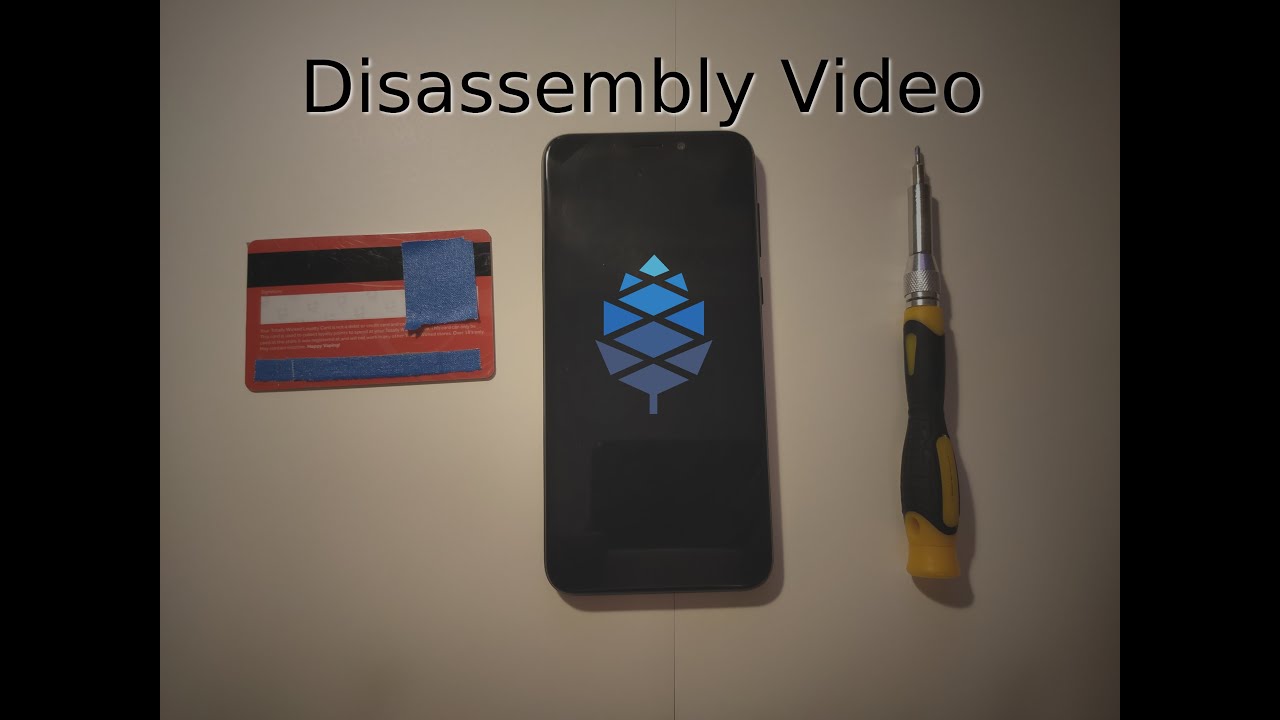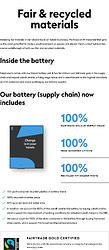The live stream can be watched on YouTube.
After two years of designing and prototyping and endless development meetings, I am immensely proud to finally unveil to the world the brand new Fairphone 5. The team at Fairphone has spent countless hours to bring our latest flagship to life, making it faster, thinner, but more importantly, fairer in every way possible. The end result is tangible proof of their success. The new Fairphone 5 is absolutely gorgeous, designed for you in every way possible. It’s got an amazing 50 megapixel camera system onboard, with better lenses, finer tuning and smarter post-processing algorithms, a vibrant 90Hz OLED display that’s crystal clear even in direct sunlight, and a modern European design that is stunning, especially the transparent edition! The Fairphone 5 is clearly the best thing we have designed, our most sustainable smartphone yet. Which got me thinking…
Is this the most sustainable phone in the world?
This is a companion discussion topic for the original entry at https://www.fairphone.com/en/2023/08/30/is-the-fairphone-5-the-most-sustainable-phone-in-the-world/
But the problem is that if:
- Materials were mined in Africa (notably DRC, where enslaved children mine), or in any other part of the world.
- The phone was assembled in China, where for example, at Foxconn, people line up the conveyor belt with nearly no automation or assistive technology.
- The papers were printed in a developing Asian country (For example, Samsung prints in Vietnam).
Then the phone is not sustainable if we take into account its production.
Anyways, another sustainable phone is the Pinephone, because:
- It is open-source, which means the people can look inside and learn about its architecture.
- It is repairable, because of its design.
- By default, it runs sustainable software by KDE, a popular Linux software company where one of its products got a sustainability certification.
I think you haven never heard of Fairphone and what they do and you’re judging to soon with the info you have, which is not enough. Where do you think the name Fairphone comes from? ![]()
You’re talking about hardware in this sentence. The hardware is just as ‘open’ as on any other phone. Or do you mean you can open the device without extra tools? That’s not open-source hardware, and in that sense it’s the same as Fairphone. If you talk about open-source software, then Fairphone is no different: https://code.fairphone.com/
I believe every mobile OS tries to limit it’s battery use ![]() I think iPhones are the most energy efficient devices out there.
I think iPhones are the most energy efficient devices out there.
You can install all kinds of ROMs on a Fairphone. This list will likely be bigger for the Fairphone 5 because it has an industrial IoT SoC. So we might expect pure Linux systems on the FP5.
You can also buy a Fairphone with these OS’s preinstalled.
And about certifications, Fairphone is the pioneer in that area.
To operate inside, you can use a screwdriver, so the Pinephone requires no additional tools. It has a removable battery, modules, and the software can be easily changed. It has 6 Pogo pins to attach other devices. See how a keyboard is attached to the Pinephone.
When I compare the 2 phones, there both sustainable options, however, The Fairphone could be more sustainable than the Pinephone.
Is it this Pinephone? Because it seems you do need tools. The same as with a Fairphone. I also don’t see the same amount of modules or ease of replacing them.
I think you really have to check what Fairphone really is. Because Fairphone is build very differently. It has an IP55 rating and a military drop certificate. It’s build very well and has many modules. They also have headphones, which are also modular.
I don’t see them pushing for fair working conditions, and the phone itself isn’t build with fairly mined resources or made of mostly recycled materials, right? I think you underestimate Fairphone at the moment.
For extensive disassembly the Pinephone does require some other tools.
Those that made the Pinephone do not offer lots of tools and guides, and it becomes less modular when you go deeper.
However, I discovered that the Fairphone has all of its components modular, and they offer guides on how to replace certain components. They use conflict-free materials, which means they have not been obtained in conflict zones in Africa.
Humans employees are involved into the Fairphone production, but it is not like Foxconn where humans are everywhere and densely packed (In china, most phone factories are like “How to build a better mousetrap, but with all mouses and no machines”)
This is why the Fairphone might be more sustainable than the Pinephone.
There are guides for all of them. On their YouTube channel there is a guide for every part. But the modules are labeled with easy to recognize icons. There are plenty of videos of people who never used a Fairphone but were able to replace modules without guides. It’s very user-friendly designed.
Not convinced I see ![]()
So, this means I can get a sustainable phone in the mainstream market.
Indeed, they are available in most of the EU. Be sure to get the Fairphone 5, if you buy one. It’s a major improvement in terms of screen, camera, sustainable materials and support lifetime.
And if i don’t have the time to repair? then
Where are the repair shops that can repair a Fairphone?
Fairphone has a community for that.
But you can also get a special subscription called Fairphone Easy. You then get a lifetime guarantee with a repair service within 48 hours. Only available in nl at the moment.
So there is no Fairphone repair shop or subscription in Romania.
The complexity of a smartphone, difficulty of getting support, the fact that is new to me, and existing knowledge made me harder to convince that the Fairphone is really sustainable.
In my country, when I buy the Fairphone 4, I can return and replace for free only within 60 days after bought it.
Now you’re mixing things a bit. There is a difference between personal support (which is the Angels program) and a fast repair service (Fairphone Easy). Then you also have your regular support, which comes with a 5 year guarantee. But then you have to send your phone in for repair (if you really can’t do it yourself, which is quite unlikely). Sending it to Fairphone for a regular repair may take 2 weeks instead of 48 hours. A 5 year guarantee is really unique.
The 4th option is to send to a third-party repair shop (they will understand its architecture), because those 3 services are not available in my country, but the 5-year warranty will void.
I don’t think this is true. The 5 year guarantee is for everywhere where the FP4/FP5 is sold. I think you’re looking at a 3rd party website, and thus you see different information. You can buy the Fairphone directly from their website.
General Warranty rule: If you mechanically modify the device (even the smallest modification), then the guarantee will void, and you cannot return or send to the manufacturer to repair it (and this includes self-repair)
Fairphone encourages people to repair, but I don’t think that the right to repair applies in my country, where third-party websites, such as the retailer eMAG are the only options if I want fast and local delivery.


